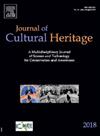Identification of low-concentration tar in wood samples from archaeological contexts by ATR-FTIR
IF 3.3
2区 综合性期刊
0 ARCHAEOLOGY
引用次数: 0
Abstract
The investigation of pine tar residues in wood recovered from a waterlogged historic pine tar production site is presented. The site is a wood tar kiln constructed in a mire, a mode of production distinct to Central Norway. Due to lack of surviving visible wood tar, this study involves a non-invasive and micro-destructive approach. Samples taken from the wood were analyzed by a combination of fluorescence microscopy, attenuated total reflectance-Fourier transform infrared spectroscopy (ATR-FTIR), and Scanning Electron Microscopy coupled with Energy Dispersive X-ray spectroscopy (SEM-EDS). Due to low concentrations of surviving wood tar, the study aimed at developing a method to reliably identify and differentiate the scarce tar residues from the wood substrate in the specimens. The results were compared against known reference materials of modern pine tar, as well as tar residue extracted from a medieval archaeological textile.
用ATR-FTIR鉴定考古环境中木材样品中的低浓度焦油
研究了从一个历史悠久的浸水松焦油生产基地回收的木材中的松焦油残留物。该基地是一个建在沼泽中的木焦油窑,这是挪威中部独特的生产模式。由于缺乏残存的可见木焦油,本研究涉及非侵入性和微破坏性方法。采用荧光显微镜、衰减全反射-傅里叶变换红外光谱(ATR-FTIR)和扫描电子显微镜结合能量色散x射线光谱(SEM-EDS)对木材样品进行分析。由于幸存的木材焦油浓度低,本研究旨在开发一种方法,以可靠地识别和区分样品中木材基材中稀缺的焦油残留物。结果与已知的现代松焦油参考材料以及从中世纪考古纺织品中提取的焦油残留物进行了比较。
本文章由计算机程序翻译,如有差异,请以英文原文为准。
求助全文
约1分钟内获得全文
求助全文
来源期刊

Journal of Cultural Heritage
综合性期刊-材料科学:综合
CiteScore
6.80
自引率
9.70%
发文量
166
审稿时长
52 days
期刊介绍:
The Journal of Cultural Heritage publishes original papers which comprise previously unpublished data and present innovative methods concerning all aspects of science and technology of cultural heritage as well as interpretation and theoretical issues related to preservation.
 求助内容:
求助内容: 应助结果提醒方式:
应助结果提醒方式:


